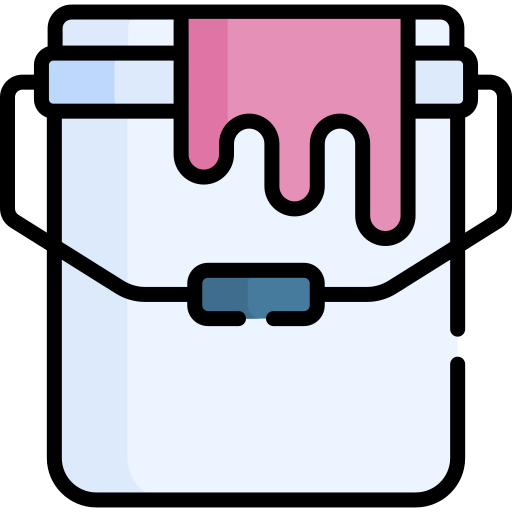Decoupage is a beautiful and rewarding craft that combines creativity with technique. To create stunning and lasting decoupage projects, having the right tools and materials is essential. Whether you are a beginner just starting out or an experienced artist looking to refine your craft, understanding the basics of what you need will set you up for success. In this blog, we’ll explore the essential tools and materials every decoupage artist should have, their uses, and tips on selecting quality supplies.
Essential Tools for Decoupage
While decoupage is a relatively simple craft, certain tools can make your work easier, cleaner, and more precise.
- Brushes: Soft, flat brushes are the best choice for applying glue and varnish evenly without leaving brush marks. Foam brushes are also popular for smooth application, especially on flat surfaces. Having a few different sizes helps with both large areas and detailed edges.
- Scissors and Craft Knives: Sharp scissors allow for precise cutting of paper and fabric. A craft knife with a cutting mat is excellent for intricate shapes and clean edges, especially when working with thick paper or delicate designs.
- Sanding Paper: Fine-grit sandpaper is useful for preparing surfaces before decoupaging and smoothing rough edges after drying. It helps the adhesive bond better and ensures a smooth finish.
- Squeegee or Brayer: These tools help smooth out air bubbles and wrinkles after placing paper onto a surface. A soft cloth can also work for this purpose, but a brayer is especially helpful for larger areas.
- Tweezers: Useful for handling small or delicate paper cutouts without tearing or creasing them.
Having the right tools on hand not only makes the process easier but also enhances the quality of your finished work.
Choosing the Right Adhesives
The adhesive is the heart of any decoupage project. It must be strong enough to hold the paper securely while remaining clear and smooth after drying.
- Decoupage Glue/Medium: Products like Mod Podge are specially formulated for decoupage, combining adhesive and sealant in one. They come in different finishes, including matte, satin, and gloss, allowing you to choose the look that suits your project.
- White PVA Glue: This common craft glue can be used but often needs to be diluted with water to avoid wrinkling the paper.
- Spray Adhesives: These can be useful for large or delicate projects but require careful ventilation and application.
Selecting the right adhesive depends on the surface you are working with and the desired finish.
Papers and Decorative Elements
The choice of paper dramatically influences the style and outcome of your decoupage art. There are many options to explore:
- Tissue Paper and Napkins: Lightweight and thin, these papers are easy to layer and work well on curved or uneven surfaces.
- Scrapbook Paper: Often patterned or textured, scrapbook paper adds bold designs and is thicker, requiring careful gluing.
- Printed Images and Photographs: Personalize projects with custom images or vintage prints.
- Fabric: Some decoupage projects incorporate fabric pieces for added texture and dimension.
Experimenting with different paper types helps you discover unique effects and styles.
Surfaces Suitable for Decoupage
Decoupage can be applied to a variety of surfaces, but each may require special preparation:
- Wood: The most common surface, wood absorbs glue well but may need sanding and priming.
- Glass: Glass surfaces need to be cleaned thoroughly, and some adhesives require curing time to adhere properly.
- Ceramic and Metal: These often require a primer or sanding to ensure the paper sticks well.
- Canvas and Cardboard: Lightweight surfaces perfect for art pieces or scrapbooking.
Understanding your surface helps you prepare it properly for the best results.
Sealants and Finishing Products
To protect your decoupage work and give it a polished look, sealing is crucial.
- Acrylic Varnish: Available in matte, satin, or glossy finishes, acrylic varnish provides a durable protective layer over your design.
- Additional Layers of Decoupage Medium: Some artists prefer multiple thin layers of Mod Podge or similar products to seal their projects.
- Specialty Sealants: For functional items like trays or coasters, waterproof or heat-resistant sealants offer extra durability.
Proper sealing ensures your art stays vibrant and intact for years to come.
Additional Helpful Supplies
There are several other items that can improve your decoupage experience:
- Mixing Palette: For blending paints or adhesives.
- Paper Towels and Cloths: For cleaning brushes and wiping excess glue.
- Protective Gloves: To keep hands clean during long projects.
- Work Surface Protection: Newspaper or plastic sheets protect your workspace from spills.
Having these extras on hand can make crafting smoother and more enjoyable.
Tips for Selecting Quality Materials
When choosing tools and materials, keep these tips in mind:
- Invest in good-quality brushes and adhesives; they significantly impact your project’s finish.
- Buy paper specifically designed for crafting or decoupage to avoid tearing or bubbling.
- Test new materials on scrap pieces before committing to your final project.
- Purchase sealants that are compatible with your adhesive and surface type.
Taking the time to select the right supplies pays off in the quality and longevity of your decoupage art.
